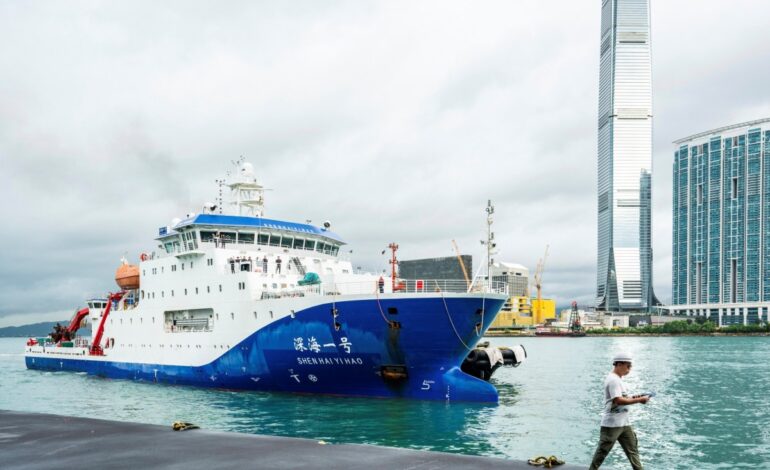China Deploys Research Ships in Indian Ocean, Raising Concerns

China has dispatched three research ships to the Indian Ocean, a region long viewed as within India’s sphere of influence. This move reflects Beijing’s ongoing efforts to enhance its maritime presence and assert its influence in strategic waters. The vessels involved are the Lan Hai 201, Shen Hai Yi Hao, and Shi Yan 6, which were reported to be operating in the area as of November 2024.
India, a crucial security partner of the United States, is actively engaged in countering China’s assertive actions in the Indo-Pacific region. Both countries are part of the Quadrilateral Security Dialogue (Quad), alongside Australia and Japan. This strategic alliance aims to maintain a balance of power in the face of China’s expanding reach. The deployment of research ships by China, which can double as military support vessels, adds a layer of complexity to regional dynamics.
Details on the Research Vessels
According to maritime analyst Ray Powell, who leads the Stanford University-affiliated group SeaLight, the Chinese ships have been active in the Indian Ocean since mid-November. The Lan Hai 201 is described by Chinese state media as a large fishery scientific survey vessel with advanced capabilities for data collection and analysis. The Shen Hai Yi Hao, equipped with a manned submersible, specializes in gathering deep-sea samples, while the Shi Yan 6 focuses on geophysical surveys.
Tracking data indicates that the Lan Hai 201 has been surveying near both India and the Maldives since November 13, while the Shen Hai Yi Hao has operated near the Diego Garcia military base, a key U.S. outpost, since November 10. The Shi Yan 6 was observed moving toward Mauritius after passing through Indonesian waters, as it entered the eastern Indian Ocean from Southeast Asia.
Implications for Regional Security
The significance of these operations is underscored by ongoing military activities in the region. India has declared a no-fly zone for a missile test in the Bay of Bengal, effective from December 1 to 4, 2024, covering over 1,000 miles from its eastern coast. This move highlights India’s proactive stance in safeguarding its territorial interests amidst China’s maritime expansion.
The Center for Strategic and International Studies reported that China is transforming its navy into a “blue water” force, capable of projecting power far beyond its shores. As the People’s Liberation Army (PLA) navigates less familiar waters, China aims to enhance its understanding of maritime conditions, which could have implications for military operations.
Responding to queries about its activities, Wang Wenbin, spokesperson for China’s Foreign Ministry, stated in February 2024 that the country’s scientific research endeavors comply with international law and are intended to contribute to a greater understanding of the ocean.
While China maintains that its actions are peaceful, the dual-use nature of its research vessels raises concerns among regional players. Analysts suggest that these ships can provide critical data that may support military objectives in the Indian Ocean.
As China continues to bolster its presence in this strategically vital region, the balance of power between major players like the United States, India, and China remains at a crucial juncture. The coming weeks and months will likely see heightened scrutiny of these developments, particularly as both nations navigate their complex relationships in the Indo-Pacific.






